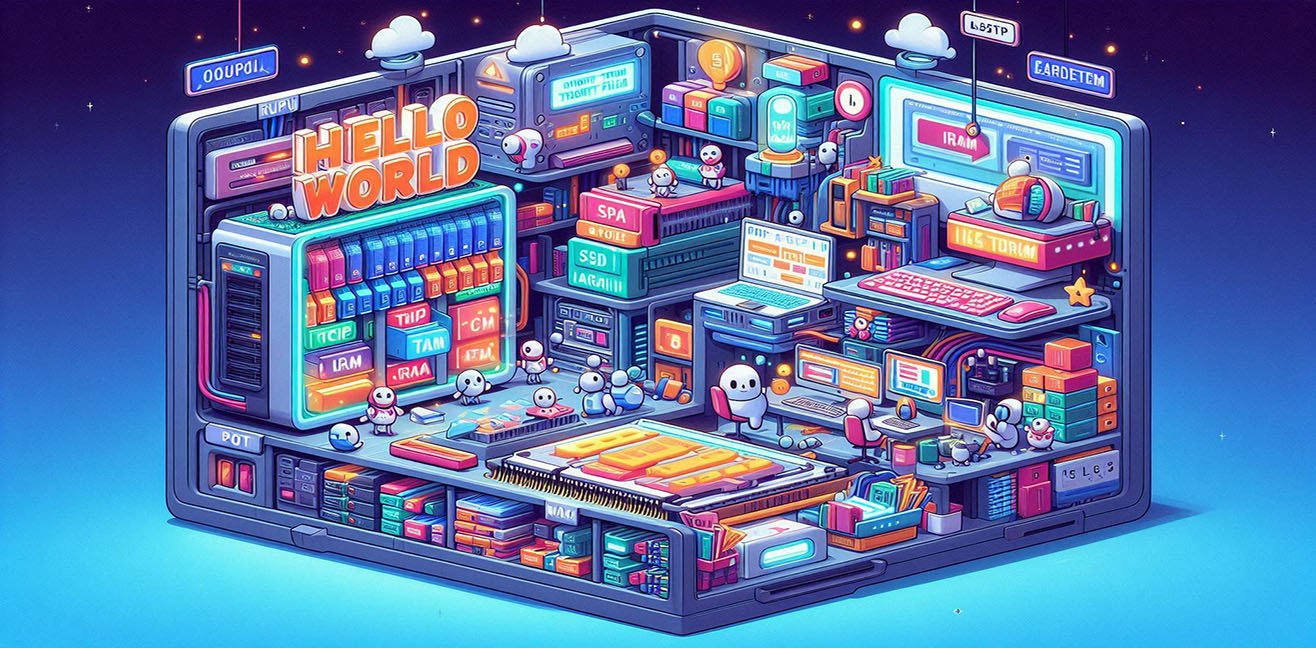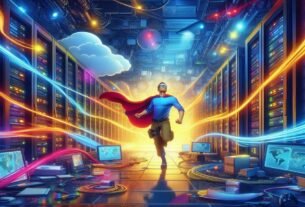You grab your morning coffee, turn on your computer…
Chrome opens with 37 tabs (why are there always so many tabs open? No one knows 😅)
But have you ever wondered what’s really happening inside that box when you click something and it instantly appears on your screen?
The answer is simple but fascinating: The Computer Processing Cycle (Input → Process → Output → Storage)
Yes, computers have four eternal loves:
1️⃣ Input
2️⃣ Processing
3️⃣ Output
4️⃣ Storage
Let’s dive into these four stages — with some technical depth, but without skipping the laughs. 😎
🎮 1️⃣ Input: The Beginning of the Story
For a computer to communicate with you, it first needs to understand what you want.
This is where input devices come into play:
Keyboard, mouse, microphone, camera, scanner, touch screen…
They’re basically how you say, “Hey there, I’m here!” 👋
🧩 Technical Deep Dive:
- Every input device converts analog data into digital form.
So when you press the “A” key, that action is transmitted to the computer as an electrical signal. - That signal is represented in binary code — welcome to the magical world of 0s and 1s!
- For a keyboard, this is interpreted using the ASCII (American Standard Code for Information Interchange) table.
For example, the letter “A” =01000001.
💡 Fun Fact:
Before that signal reaches the CPU, it’s actually processed by a tiny microcontroller inside your keyboard.
Yep — your keyboard has a tiny brain of its own! 😎
⚙️ 2️⃣ Processing: The Heartbeat of the Computer ❤️🔥
Now enters the CPU (Central Processing Unit) — the star of the show.
The CPU is like the brain of your computer, but also the most disciplined factory worker you’ll ever meet.
It never stops, executing billions of instructions every second.
🧠 How Does the CPU Work?
Every operation follows a three-step process known as the Fetch–Decode–Execute Cycle.
- Fetch:
The CPU grabs an instruction from RAM.
“Let’s see what’s next on the to-do list,” it says. - Decode:
It figures out what that instruction means.
“Ah, okay, a simple addition operation.” - Execute:
It performs the task and produces a result.
“Done, my love. 2 + 2 = 4 😘”
This cycle repeats billions of times per second.
Modern CPUs boost this performance using techniques like pipelining, branch prediction, cache memory, and parallel execution.
💡 Technical Note:
- CPU speed is measured in GHz (Gigahertz) — 1 GHz = 1 billion cycles per second!
- Inside the CPU are millions of transistors — tiny gates that either open (1) or close (0).
- All these micro-operations together create what we call digital intelligence.
💬 Humor Break:
Ever opened up a CPU to see what’s inside?
You’d see… absolutely nothing you can understand — because by the time you blink, it’s already done three million calculations. 🤯
🖥️ 3️⃣ Output: The Miracle on Your Screen 🌈
The CPU has done its job, the result is ready —
but you still can’t see anything yet, right?
That’s when output devices step in: monitors, speakers, printers, projectors…
👀 How It Works:
- The CPU sends the result to the GPU (Graphics Processing Unit) or directly to the graphics card.
- The GPU converts that data into a visual pixel array.
- You see “Hello World” appear on your screen.
🎧 Similarly, sound is converted from digital to analog form.
That “ding” your computer makes?
Yep, that’s output too!
💡 Mini Fact:
Every pixel on your screen consists of three tiny color dots — red, green, and blue (RGB).
Mix these three and you get every color in the digital universe. 🌈
🎨 Fun Analogy:
Your screen is like a painter using only three colors — but their brush moves millions of times per second!
💾 4️⃣ Storage: The Heart That Never Forgets 🗃️
“So what happens next?” you ask —
Welcome to the memory world of computers!
Storage comes in two main types:
- Temporary Memory (RAM):
This holds information the CPU is currently using.
It’s fast but forgetful — once the power’s off, poof! it’s gone. 😅 - Permanent Memory (HDD, SSD, Flash):
This is long-term storage — your documents, photos, and games live here.
⚡ Technical Deep Dive:
- HDD (Hard Disk Drive): Uses magnetic platters and moving parts.
- SSD (Solid State Drive): Uses electronic circuits — much faster.
- RAM (Random Access Memory): Like the CPU’s temporary workspace.
💬 Funny Comparison:
CPU → An engineer who works without coffee ☕
RAM → Notes scattered across the engineer’s desk
SSD → The archive cabinet in the office
You → The boss asking, “Why are there 37 files on your desktop?” 😅
🔁 5️⃣ The Cycle: The Endless Dance 💃
This entire process happens so fast that you only see the final result.
But in reality, it’s a continuous rhythm:
Input → Processing → Output → Storage → (then back to Input!)
This cycle is the heartbeat of the computer.
Every click, every word you type, every “Ctrl + Z” — it’s all this rhythm repeating. 💓
💬 Quick Summary:
| Stage | What Happens? | Devices | Example |
|---|---|---|---|
| Input | Data is entered | Keyboard, mouse, mic | Pressing the “A” key |
| Processing | Data is processed | CPU, ALU, CU | 2 + 2 = 4 |
| Output | Result is shown | Screen, printer, speaker | Seeing “4” on the screen |
| Storage | Data is saved | RAM, SSD, HDD | Saving a file |
💡 Conclusion: Computers Are Just Like Us
Computers are just like us, my love:
They think (CPU), remember (RAM), store (SSD), and speak (Output).
The only difference? They can do it all without coffee! ☕😆
Next time, shall we dive deeper into the CPU?
“The Secret Life of the CPU: Transistors, Caches, and Command Storms!”
Get ready — we’re zooming in on the brain of your computer! 🔍🧠⚡




